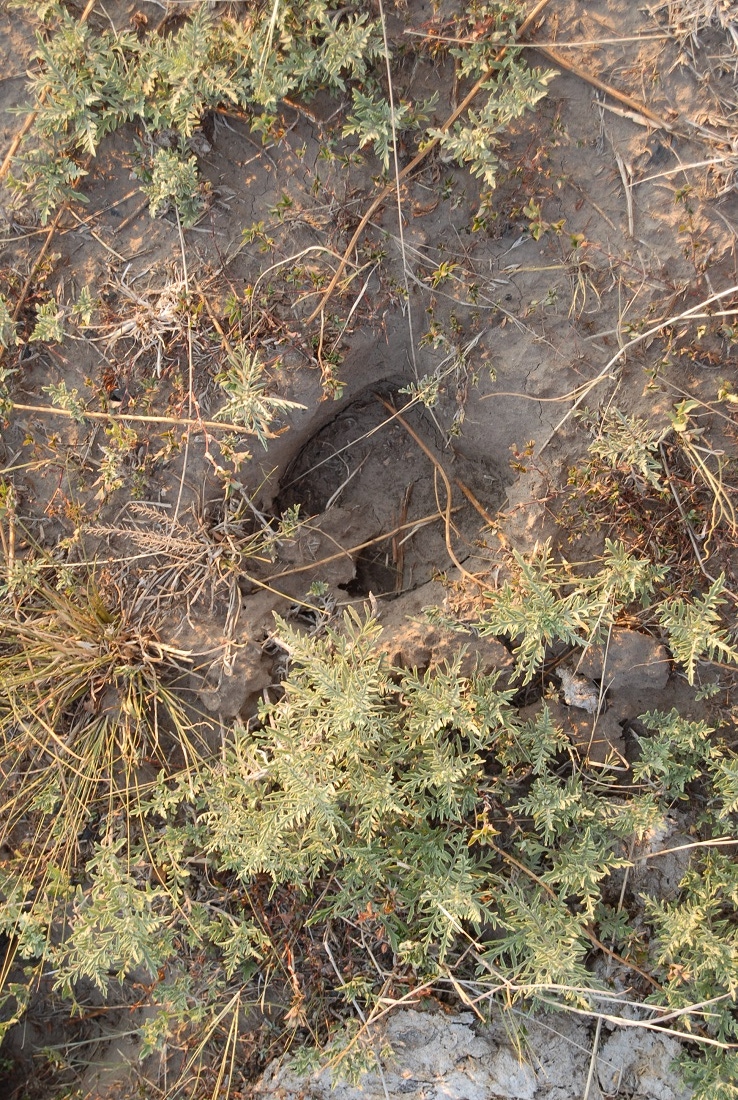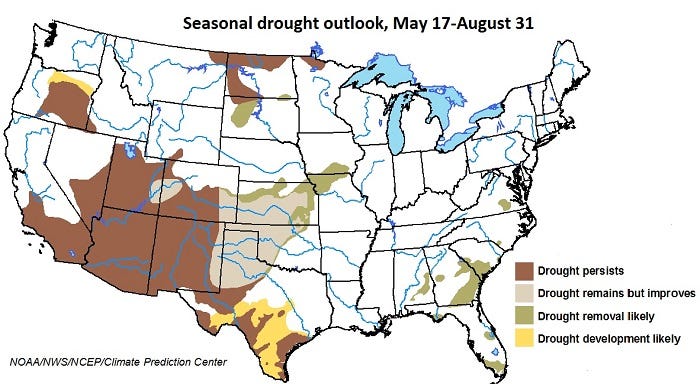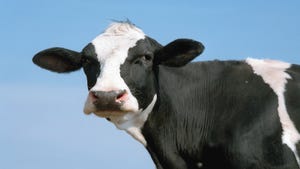
This is shaping up to be a difficult forage year, if you look at current drought maps, long-term weather forecasts, and the May 1 USDA report on seriously declining US hay stocks
The latest drought monitor map shows a large area of dry soil and stressed forage across a very large area of the Southwest, Southern Plains and the Northern Plains. Further, the National Oceanic and Atmospheric Administration is suggesting the droughty areas will stay relatively dry -- although with some relief in the central Plains -- through the summer. See the map in this story or go to the webpage to read more.

One of the major factors in long-term weather is the El Nino Southern Oscillation (ENSO) in the central Pacific ocean, a cyclical pattern of warmer and cooler sea surface temperatures that affect rainfall in the US and elsewhere.
La Nina officially ended in April, as sea-surface temperatures in the Pacific returned to neutral conditions, which means within one-half degree Celsius of the long-term average temperatures.
The National Weather Service Climate Prediction Center is now predicting ENSO-neutral conditions from now through September-November 2018, with the possibility of El Niño nearing 50% by winter months in the northern hemisphere.
Keep in mind that both El Nino and La Nina have the most pronounced effects on moisture in wintertime. Therefore the so-called "neutral" conditions suggest reasonably strong odds that whatever your typical summer weather pattern, that's what you can expect this year.
The May Crop Production report showed May 1 hay stocks were down to 15.7 million tons, which compares with 24.4 million tons on May 1, 2017. The Livestock Marketing Information Center says it is the lowest May 1 stocks report since 2013.
LMIC also says, "Nearly half of US states saw declines of 30% or more in hay stocks. Those drops were not limited to drought areas. Only 16 states showed higher year-over-year May 1 stocks. In critical drought areas of TX and OK declines were over 50%, implying supplemental feeding as 2017 combined hay production declines down only 11%. Surrounding states also have large declines in inventory. Louisiana was down 63%, Missouri fell 61% and Kansas by 30%."
It seems possible this forage deficit could help end the national expansion of the cow herd, but time will tell.
About the Author(s)
You May Also Like




